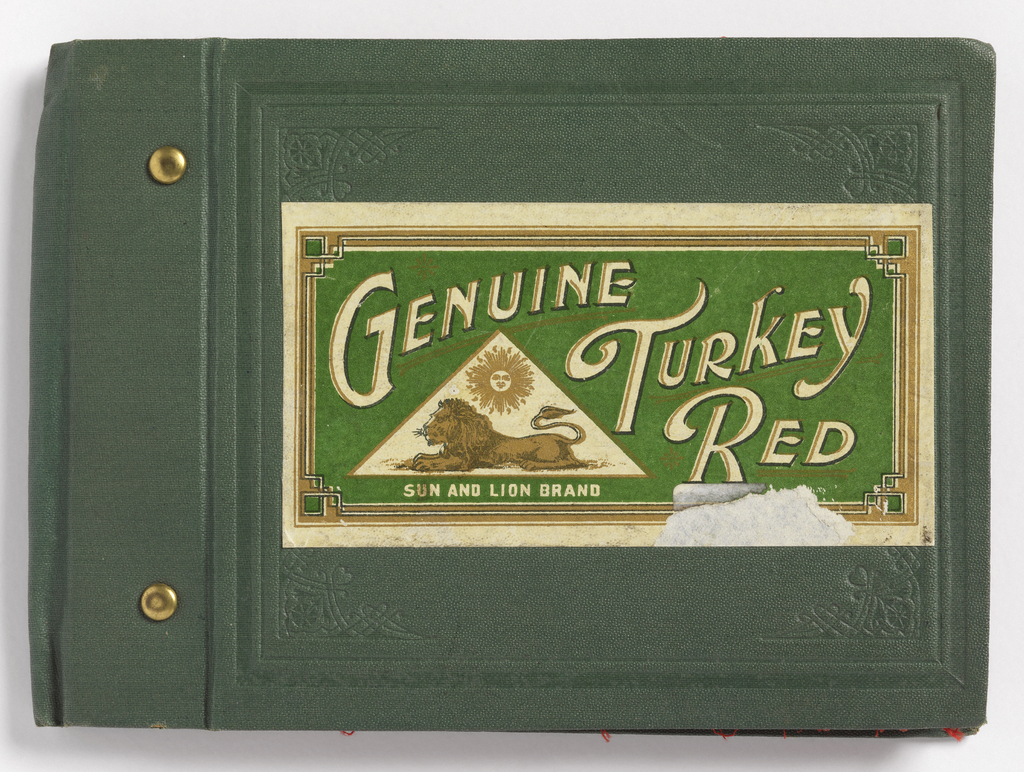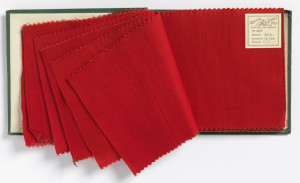Turkey red refers to a brilliant scarlet dye for cotton, or more accurately, a process for dyeing cotton red. As suggested by the variety of names used –Turkey red, Adrianople red, rouge des Indes—the technique was practiced throughout the eastern Mediterranean, but was completely unknown in Europe before the eighteenth century. In order to discover the secret process, textile firms in England and France began sending industrial spies to Turkey and Greece. Other companies, particularly in the cotton producing centers of Rouen and Mulhouse in France and Manchester in England brought master dyers from Turkey or Greece to Europe to teach them the technique.
Once the secrets were revealed, however, European dyers were not too pleased with what they learned. The process was terribly labor-intensive and difficult. Recipes called for 15 to 20 steps, including multiple baths in lye, rancid olive oil, sheep dung, and ox blood. Drying the oil-soaked cloth created a fire hazard, so special drying towers had to be built away from the dyeworks. Furthermore, the process was not adaptable to the printing process, but could only be used for dyeing yarns, or, with some difficulty, whole cloth. This sample book, for example, contains twenty-eight solid red samples on varying weights of cotton cloth, from batiste to canvas. Traditional resist patterning could not be used, because no resist paste could withstand the many aggressive steps required to achieve the color.
So dyers began experimenting to simplify the process, and so to understand how the chemistry of the Turkey red process worked, and which steps were strictly necessary (the blood, it seems, was not). This led to a series of incremental improvements in dye technology, including the standardized use of alum as a mordant, and the addition of a brightening or “gladdening” bath in tin salt after dyeing.[i] The technique of discharge printing, or creating pattern by selectively bleaching the color out of selected areas, was developed largely to print Turkey red dyed cloth. Finally, alizarin, the organic compound which gives Turkey red its color, was the first natural dye to be synthetically reproduced, in 1869, bringing the tale of Turkey red mostly to a close, although some Turkey red dyeworks persisted until the early twentieth century.
[i] Sarah Lowengard, “Industry and Ideas: Turkey Red, Technology Transfers and Changes, Imitation and Global Trade.” (New York: Columbia University Press, 2006) accessed at www.gutenberg-e.org/lowengard

